- Home
- Muriel Spark
Curriculum Vitae
Curriculum Vitae Read online
MURIEL SPARK
CURRICULUM VITAE
A Volume of Autobiography
With a preface by
ELAINE FEINSTEIN
CONTENTS
Title Page
Illustrations
Preface by Elaine Feinstein
Introduction
Chapter One
Chapter Two
Chapter Three
Chapter Four
Chapter Five
Chapter Six
Chapter Seven
Index
Plates
About the Author
Also by Muriel Spark from Carcanet Press
Copyright
ILLUSTRATIONS
Bernard Camberg, Muriel’s father
Adelaide Uezzell, Muriel’s grandmother
Watford: the shop of all sorts
Muriel’s grandfather, Tom Uezzell; her mother (Cissy) and goat
Philip Camberg, Muriel’s brother
The soprano upstairs
Charlotte Rule (née Brodie) (Miss Margaret Rule)
Part of Muriel’s juvenilia
James Gillespie’s Girls’ School, Junior Class, 1930
Muriel aged 10
The Windsor Castle (The Hulton Picture Library)
Muriel in Bulawayo
The Victoria Falls (The Hulton Picture Library)
Muriel with her son Robin
Esther, Robin’s nanny
Marie Bonaparte (Princess George of Greece) (Mary Evans Picture Library)
Muriel aged 29
Robin Spark
Sarah Camberg (Cissy), Muriel’s mother
Bernard Camberg (Barney), Muriel’s father
Christmas Humphreys (Toby) (The Hulton Picture Library)
Sefton Delmer (The Hulton Picture Library)
Dr Marie Stopes (The Hulton Picture Library)
Graham Greene (The Hulton Picture Library)
Allington Castle: a Carmelite retreat (Aylesford Priory)
Muriel with Tiny Lazzari
Alan Maclean (Alan Maclean)
Bluebell
PREFACE
Spark – which suggests flash, danger and brevity – is a splendid name for a writer whose elegance has never dated. It was not, I now discover, Muriel’s own name but that of Sydney Oswald Spark, to whom she engaged herself at nineteen, ensnared by the promised adventure of a life in Kenya. She left him after only two years of marriage, alarmed by his violent moods; but she held on to his surname with the sure instinct of a poet.
Her name at birth was Camberg, and she had Jewish roots on both sides of her family. In The Mandelbaum Gate, her Catholic heroine describes herself without qualm as a half-Jew. Spark always felt more estranged from the dour Scots Calvinism of Edinburgh where she grew up than from the ambiguities of her inheritance.
Curriculum Vitae is a sly, tantalising account of her life. ‘Details fascinate me,’ Spark avers, but, rather like the figure in Hothouse by the East River whose shadow falls whichever way she chooses, she discloses only what she intends the reader to know. More than half the book is taken up with details of her childhood: the smell of bread shops, carefully made tea, the pink elastic garters which held up her grandmother’s black stockings, her mother’s superstitions, and the geniality of the rituals in the houses of her Watford relations.
When she abandoned her husband in 1944 after so brief a marriage, with some courage she returned to Britain on a troopship. Once in Scotland, poor and in ill-health, she determined to leave her son, Robin, with her parents in Edinburgh while she went to London, explaining: ‘There was not only very little scope for me to earn my living, but it was not at all convenient that I should continue to live with my parents.’ Sensible this may have been, but I am reminded of the great Russian poet Anna Akhmatova leaving her own son with her husband’s mother; and of Storm Jameson making a similar decision but with more anguish. Both paid a terrible price for their common-sense selfishness. Spark does not seem to have been unduly troubled.
Her passion was literature, though her ambitions were at first humble enough. She was blonde and pretty, and though she had little formal education beyond her excellent schooling, charm and ebullience soon brought her a series of jobs in publishing. She had the enthusiasm of an autodidact. A knowledge of the novels of Ivy Compton Burnett secured her a job doing secret work at the Foreign Office. There she met Sefton Delmer and helped him to put out propaganda designed to deceive the Germans into thinking they had already lost the war.
Her avowed purpose in writing Curriculum Vitae was to correct mistakes in a biography written by her former lover and one-time literary collaborator, Derek Stanford; he was portrayed savagely as Hector Bartlett in A Far Cry from Kensington. It is hard not to feel rather sorry for him, since his crimes seem to have been careless rather than malicious. Spark, however, is convinced that her sudden celebrity had triggered literary envy, a poison she analyses unforgettably in Memento Mori. Of Stanford she remarks flatly: ‘He endured a nervous breakdown at the time of my first success.’
She revels in pointing out the real-life sources of some of her most popular novels. There is a wonderful portrait of her English teacher, Miss Christina Kay, who was the model for Miss Jean Brodie, and she vividly describes the shabby glamour of the Helena Club in Lancaster Gate, which became the May of Teck Club in The Girls of Slender Means.
Of emotional drama in her own life, however, she chooses to tell us little. She was not fortunate in her relationships with men. Another lover, Howard Sergeant, the editor of Outposts, is depicted as prone to envy and mental disorders rather as Stanford had been; he was, in addition, married. ‘Howard wrote a long anguished letter in which he described a scene with his wife…and repeated her arguments against a divorce, sensible enough, pointing out that I should “never be able to keep his house clean without assistance which he could not afford”.’ With cool candour, she admits the truth of this last observation.
Her earliest literary successes were as a poet. She became editor of Poetry Review in 1947, and is entertaining about her troubles with opponents of modern verse. She did not write novels until she was forty, and might perhaps never have done so if her short story ‘The Seraph and the Zambezi’ had not won a competition in the Observer. The rapidity of her success after The Comforters earned her the admiration of Evelyn Waugh and financial support from Graham Greene. Nearly forty years later, when she came to write Curriculum Vitae, her cool confidence sounds unshakeable. It is intriguing to wonder about the conflicts and crises her genius enabled her to conceal.
ELAINE FEINSTEIN
2009
INTRODUCTION
I am a hoarder of two things: documents and trusted friends. The former outweigh the latter in quantity but the latter outdo the former in quality.
Details fascinate me. I love to pile up details. They create an atmosphere. Names, too, have a magic, be they never so humble. Most of the names in this, the following account of the first thirty-nine years of my life, are unknown to the public. For that very reason they are all the more precious to me.
So many strange and erroneous accounts of parts of my life have been written since I became well known, that I felt it time to put the record straight.
I determined to write nothing that cannot be supported by documentary evidence or by eyewitnesses; I have not relied on my memory alone, vivid though it is. The disturbing thing about false and erroneous statements is that well-meaning scholars tend to repeat each other. Lies are like fleas hopping from here to there, sucking the blood of the intellect. In my case, the truth is often less flattering, less romantic, but often more interesting than the false story. Truth by itself is neutral and has its own dear beauty; especially in a work of non-fiction it is to be c
herished. Besides, false data lead to false premises and those to false conclusions. Is it fair to scholars and students of literature to let them be misled even on the most insignificant matters? One writer of a recent biography, having given a false account of me on a demonstrably non-existent occasion, expressed herself puzzled at my objection. Her scenario showed me in what she conceived a ‘good’ light. Be that as it might, it was all untrue. It showed me to be a flourishing hostess at a time when I was little known and poor. (And one does not want one’s early poverty mocked.) It showed me to have among my ‘guests’ two notable people who at that time I did not know. What was damaging about the lie, the biographer wanted to know. Damaging! Slices of three people’s biographies are falsified, mine and two others. But far worse than personal damage is the damage done to truth and to scholarship.
The above is only one example of irresponsible reportage; it can only confound literary history. I am sure that many of the life-stories of my successful colleagues suffer equally.
For the memories of my early youth my best source of confirmation and information is my brother Philip Camberg who, being five and a half years my elder, has been able to recall names, places, dates, facts, more clearly than I could. (A childhood memory from the age of four can obviously be more clearly realized when the same knowledge and experience were shared with a child of nine and a half.) My brother, now a retired research chemist in the United States, entered into the checking of my childhood memories with the greatest enthusiasm.
My cousin Violet Caro also helped to confirm my young memories, and my young cousin Martin Uezzell has been to a great deal of trouble to look up and unearth family details. My son Robin Spark has looked out for me some of our family photographs to enrich the supply sent to me by my brother Philip.
When a version of my childhood experiences first appeared in the New Yorker I was delighted by the number of people who wrote to me to confirm, modify and elaborate on what I had written. These were either eyewitness contemporaries or their children. One of my warmest correspondents is Barbara Below, daughter of the ‘Professor Rule’, a friend of my parents, who captured my imagination between the ages of three and four, and whose wife Charlotte taught me to read and write. Mrs Below has gone to endless trouble to identify incidents and dates, and obtain for me the charming photograph of Charlotte Rule reproduced in this book.
And what would I have done for my Edinburgh school-days without the help of my friend Ian Barr and that of my schoolmates? Ian Barr, now retired, is a scholar and thinker with great attributes of warmth and entertainment-power; he has been indefatigable in producing data from difficult sources of information for me. Ian Barr, in the true Scottish style, was a young man in the Post Office before he rose to be Chairman of the Post Office Board; so many years later he still remembered my parents’ address in Edinburgh where telegrams and special messages were delivered. And my schoolmates; Frances Niven (now Cowell), my best friend of those years, has helped me throughout, not merely with corroborative facts but with the encouragement of an old and affectionate friendship. I am grateful to Cathie Davie (now Semeonoff) who has given me her invaluable memories of Bruntsfield Links as it was when we walked across it in our youth. I warmly thank Elizabeth Vance whose letters have amused and sustained me and whose vivid impressions of our life at James Gillespie’s School I have quoted from. Also for anecdotal reminiscences and amusing recollections about our school-days I thank Dorothy Forrester and Dorothy Forrest (now Rankine).
It is from the 1940s onward that I possess the greatest bulk of letters and other documents, and for her care of and deep interest in these archives over the past twenty-four years I express my gratitude to my constant supporter and companion, Penelope Jardine. It is thanks to her intelligent listing and docketing that I am able to lay hands on the papers required both to stimulate and verify my thoughts of the past. It is thanks to her sense of humour that I have enjoyed what at first looked like an alarming task. And it is Penelope Jardine to whom I owe gratitude for the use of rooms in her capacious house where she has stacked, arranged and accommodated this accumulation of papers.
The present memoir brings me up to early 1957, when I published my first novel. There are few famous names in this period of my life, but it was indeed full and rich. I hope to have given a picture of my formation as a creative writer.
I used to have an elderly friend in Rome, Lady Berkeley (Molly) whom I would sometimes visit in her flat in the Palazzo Borghese. Molly lived in style. When I asked her about the past, which she loved to talk about, she would send the butler for her book of family memoirs to check the facts. I thought it an excellent idea. Perhaps we should all write down our reminiscences to keep us from straying from reality in our latter days.
I have frequently written autobiographical pieces. What I have felt when composing them, and what I have experienced throughout my work on this volume, is a sense of enriched self-knowledge. ‘Who am I?’ is always a question for poets. I once had a play commissioned in the early days of my vocation. I met the producer for the first time one night to hand over the first act. Next day I received a wire: ‘Darling this is what we were hoping for. Ring me at ten a.m. tomorrow, darling.’ I duly phoned him at ten the next morning and gave the secretary my name. He came on the phone. I repeated my name. ‘Who are you, darling?’ he said.
I thought it a very good question, and still do. I resolved, all those years ago, to write an autobiography which would help to explain, to myself and others: Who am I.
I owe special acknowledgement to The New Yorker magazine in whose pages a number of the following chapters appeared.
In addition to those of my friends and relations mentioned above, to whom I have expressed my indebtedness, I would like to thank the following people and institutions both for their useful volunteered information and for their unfailingly cheerful responsiveness to my questions:
The Hon. Peter Acton; The British Council, Rome; The British Institute, Florence; Mr Robert L. Bates; Mr Alan S. Bell, Rhodes House Library; Mr Nigel Billen; Mr Terence C. Charman, The Imperial War Museum, London; Mr Bill Denholm; Mr John Dunlap, Royal Mail, Edinburgh; Ms Mary Durham; Mr Tom Erhardt, Casarotto Ramsay Ltd; Mr Howard Gerwing, University of Victoria Library, BC; Prof. John Glavin; Mr Chris Green, The Poetry Society, London; Ms Jean Guild; Ms Cathy Henderson and Ms Sally Leach of the Harry Ransom Research Library, University of Texas at Austin; Mr Hardwicke Holderness; Mr Peter Hutcheon; Judge Don W. Kennedy; Prof. D.R.B. Kimbell, Faculty of Music, University of Edinburgh; The Merchant Company of Edinburgh; Mr Charles McGrath and the Checkers of The New Yorker magazine; The McLellan Gallery, Glasgow; Mr Michael Olver; Mr Leslie A. Perowne; Mr Terence Ranger, St Anthony’s College, Oxford; Mr Kevin Ray, Washington University, St Louis, Mo.; Mr Colin Smith, Ministry of Agriculture, Fisheries and Food; Dr Jay Snyder; Mr Tony Strachan; The Hon. Guy Strutt; Mr Alan Taylor, Scotland on Sunday; M. Alain Vidal-Naquet; Mr Auberon Waugh; Mr Gerald Weiss; Mr Anthony Whittome and Ms Joan Winterkorn.
MURIEL SPARK
Oliveto, 1992
CHAPTER ONE
Bread, Butter and Florrie Forde
Groping for the luminous past of my first infancy I never fail to find it gleaming here and there; but never in chronological order as when I think of my later years. My childhood in Edinburgh, so far as my memory stretches back (to when I was three or four and on to my school-days) occurs in bright flashes, illuminating every detail of the scene. It would falsify the situation to try to connect my earliest years in a single narrative.
I was born in Edinburgh, at 160 Bruntsfield Place, the Morningside district, in 1918.
Bread
Bread came from Howden’s, the shop above the ovens where it was made. The pavement outside the shop was warm, and hot air steamed out of a grating near the door. The floury baker and his boy (known, not unkindly, as ‘the daft laddie’, since he was rather simple) were white all over, the baker wore a white hat, flat at the top like an upturned pie-dish, the boy�
��s was also flat-topped: they carried trays of bread on their heads. As they came up with their trays of bread into the shop their faces and hands, their overalls were white, and their shoes were flour-dusted.
Bread came in many forms including high pan, square pan, and cottage loaf. Of the first two you could buy a half-pan or a whole pan, according to your needs. High pan was an arch-topped rectangle, and made slices that, cut diagonally and spread with jam, were elegant for afternoon tea. Square pans were good for making up a lunch, known as a piece to take to work or school. They were also better for making breakfast toast. A cottage loaf looked like a domed chapel with a small square annexe. It looked decorative on the table.
In the morning, warm, round bappy rolls with a powdering of flour were procured from the baker, as also were bran scones, triangular and made of brown flour – virtuous, good for your health. Oat cakes, triangular biscuits, were even healthier. In the afternoon came a fresh supply of breads, sometimes Sally Lunns, embedded with currants and raisins. In Edinburgh the favourite tea-time bread was a shearer’s bap, which was flat and warm. (Bapper is the Scottish word for baker.) Soda scones were generally made at home, but Howden’s, too, did a brisk afternoon trade in those small, sharp-tasting lumps, thirsty for butter.
Butter
Butter came from the Buttercup Dairy Company.
A pink-and-white complexioned girl, with her hair in a cap and wearing a sparkling white overall under bright lights in winter, stood behind the marble-topped counter, beside two huge slabs of butter which reached to her shoulder. One of these slabs was fresh butter and the other was salt. Salt butter was cheaper and many people preferred it. Fresh butter was brought in from the farm every morning. The pink-and-white girl took a slice of greaseproof paper and laid it on the bright brass scales. She then took two large wooden butter-pats, one in each hand. Before she cut off your daily pound or half-pound she dipped the pats into a blue-and-white porcelain bowl of cold water. With the wooden pats she then placed each portion of butter deftly on the scales to be weighed, and she added or took away like a sculptor with his clay, until she had achieved the required weight. Now came the beautiful and clever part. The girl placed her butter, in its paper, on the counter; next, still with her pats, she cut it into cubic portions – small pieces of about a quarter of a pound – and then swiftly and neatly she worked each small cube into a flat round. Finally she took a wooden butter-stamp and, after dipping it in water, stamped each butter-medallion with a sharp slap. The imprint that was left was surrounded at the edge with the words ‘Buttercup Dairy Company’, and in the middle, on the butter, was the form of a small girl kneeling on one knee beside a friendly cow, under whose chin she held a buttercup. (This was a reference to our childhood custom of holding a buttercup under each other’s chin with the words ‘Do you like butter?’ If the skin reflected a small yellow glow the answer was Yes. So far as I recall the answer was never No.) All this butter performance took place in a twinkling of an eye.

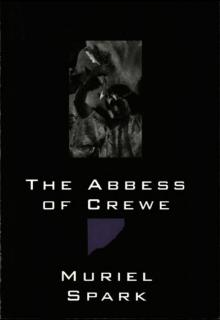 The Abbess of Crewe: A Modern Morality Tale
The Abbess of Crewe: A Modern Morality Tale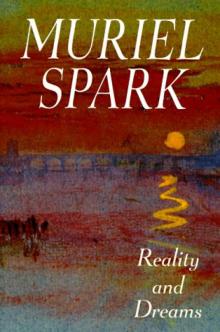 Reality and Dreams
Reality and Dreams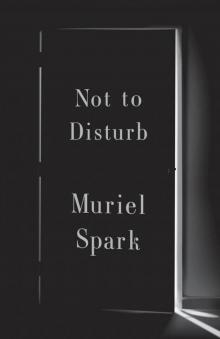 Not to Disturb
Not to Disturb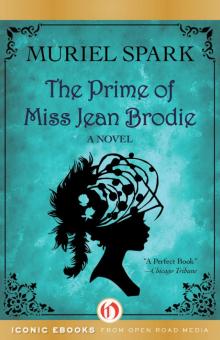 The Prime of Miss Jean Brodie
The Prime of Miss Jean Brodie The Hothouse by the East River
The Hothouse by the East River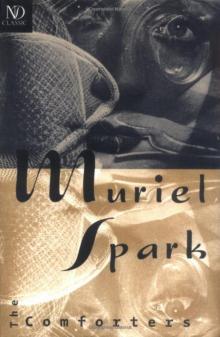 The Comforters
The Comforters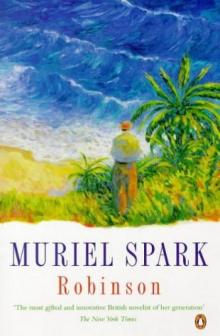 (1958) Robinson
(1958) Robinson Unknown
Unknown Memento Mori
Memento Mori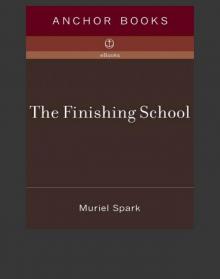 The Finishing School
The Finishing School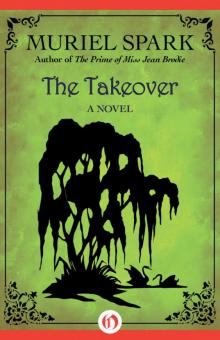 The Takeover
The Takeover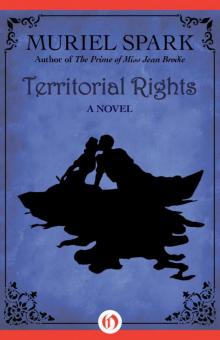 Territorial Rights
Territorial Rights The Complete Short Stories
The Complete Short Stories The Golden Fleece: Essays
The Golden Fleece: Essays The Ballad of Peckham Rye
The Ballad of Peckham Rye Doctors of Philosophy: A Play
Doctors of Philosophy: A Play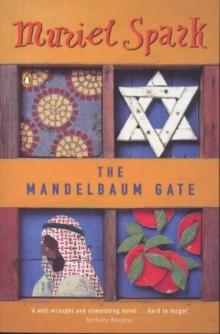 The Mandelbaum Gate
The Mandelbaum Gate Loitering With Intent
Loitering With Intent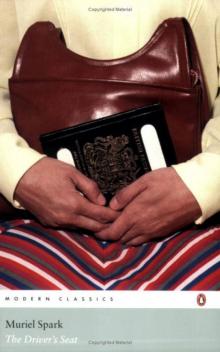 The Driver's Seat
The Driver's Seat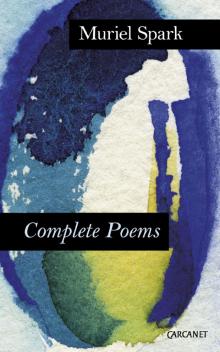 Complete Poems: Muriel Spark
Complete Poems: Muriel Spark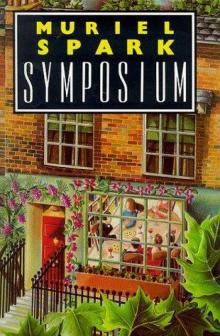 Symposium
Symposium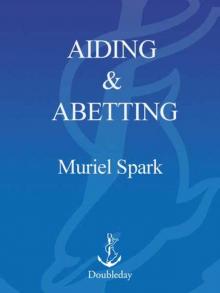 Aiding and Abetting
Aiding and Abetting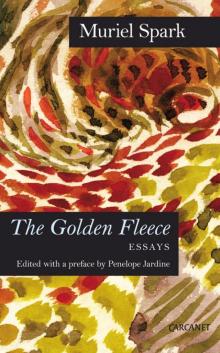 The Golden Fleece
The Golden Fleece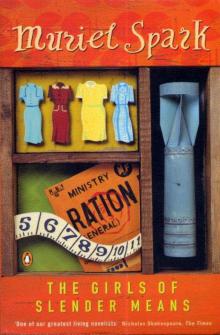 The Girls of Slender Means
The Girls of Slender Means Alice Long’s Dachshunds
Alice Long’s Dachshunds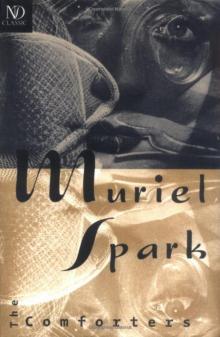 (1954) The Comforters
(1954) The Comforters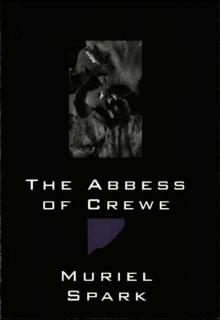 The Abbess of Crewe
The Abbess of Crewe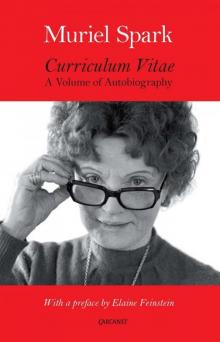 Curriculum Vitae
Curriculum Vitae The Only Problem
The Only Problem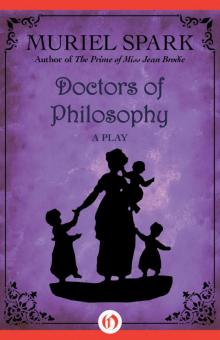 Doctors of Philosophy
Doctors of Philosophy